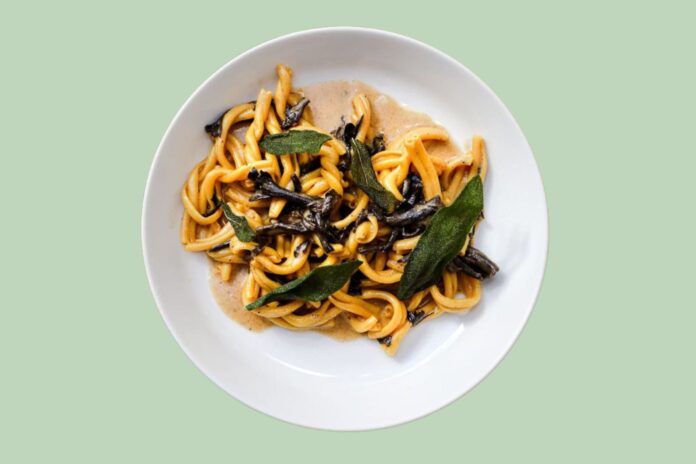While there’s a temptation to complain that there’s now ‘’a day for everything’’ here in the UK, from National Awkward Moments Day (isn’t that every day?) on March 18th to Lost Sock Memorial Day (hey, isn’t that…) on May 9th, we do think this one deserves recognition; National Burger Day, which is just around the corner on August 25th.
Hey, isn’t that every day?
Because if obsessing over burgers is a crime, then consider us Brits ‘grill-ty’ as charged! Indeed, last year it was reported that British meateaters collectively eat 2.5 billion beef burgers every year, and considering our prolific consumption here at IDEAL, we’re surprised that number isn’t even higher.
With the cost of living crisis causing even the likes of McDonalds to raise the prices of their famous cheeseburger, this year you might be wondering how to recreate a restaurant worthy burger from the comfort of home. We’re here to help with that; here, a selection of top restaurant chefs reveal how to cook the perfect burger at home.
Patty That
A brilliant burger starts with the beef, of that there is no doubt.
When it comes to choosing your meat, Kenneth Tyrrell, Head of Kitchen Operations and Food at Burger & Lobster, says his “main advice when making a burger from scratch would be to know what cuts of meat are going in your burger – when you buy pre-minced meats from a supermarket this is hard to do.’’
He goes on to counsel that ”the simplest way to make a fantastic burger is to buy a quality cut of meat and then mince it yourself (this can be done easily by hand, or with a food processor). Opt for what people consider ‘tougher’ cuts as this is where the flavour can be found, and the higher fat quantity works as a natural binder”.
Ioannis Grammenos, Executive Chef and Meatologist at the Heliot Steak House, tells us “making burgers at home is easier than you think.’’
Reassuring words, indeed.
He continues; ”There are a few important things to think about…first and foremost is the quality of your meat. Choose the best quality meat that you can afford to make your burgers, as this is where the flavour and texture comes from. For me, the ideal meat to far ratio is 80% beef with 20% fat – this blend is made from fatter meat which has more flavour. I usually use chuck or tri-tip cuts as they contain this fat ratio. If you can’t find chuck, you can use chicken or lamb.”
Chicken! Lamb! Beef! We’re in turducken territory here. Kind of…
Anyway, Executive Chef Dickie Nelson from Fat Hippo largely agrees, elaborating that “when making your patties, use pure beef with a fat content of 10-20%.’’
Seasoning
Dickie goes on to suggest some simple though important seasoning tips; ‘’You want to maintain as much moisture as possible throughout the process to ensure the burger keeps its optimum level of juiciness. Therefore, don’t season when mixing the beef, as this will bring out the moisture of the meat. Then, before cooking, make sure your patty is packed well so they stay together during the cooking process.’’
When it comes to seasoning your meat, our old mate Tyrrel from a previous paragraph warns against over seasoning, too; “It’s crucial to keep seasoning to a minimum – you’ve already got a great piece of meat with flavours you want to shine through. Simply salt and pepper the outside of the patties before cooking and you’re good to go”.
Phew, that’s good to hear. We thought we might have to write a whole article about famous fast food outlets’ secret seasoning mixes again!
Back to our guy Grammenos from the Heliot, who says that “For flavour, I like to experiment with fresh additions to the burger mix, but my failsafe choices are fresh parsley, fresh marjoram and lemon zest, which cut through the flavours of the beef to season and brighten the final burger”.
Personally, we prefer our burgers as pretty plainly seasoned, but we’re looking forward to adding a little lemon zest next time we try to make the best possible burgers at home.
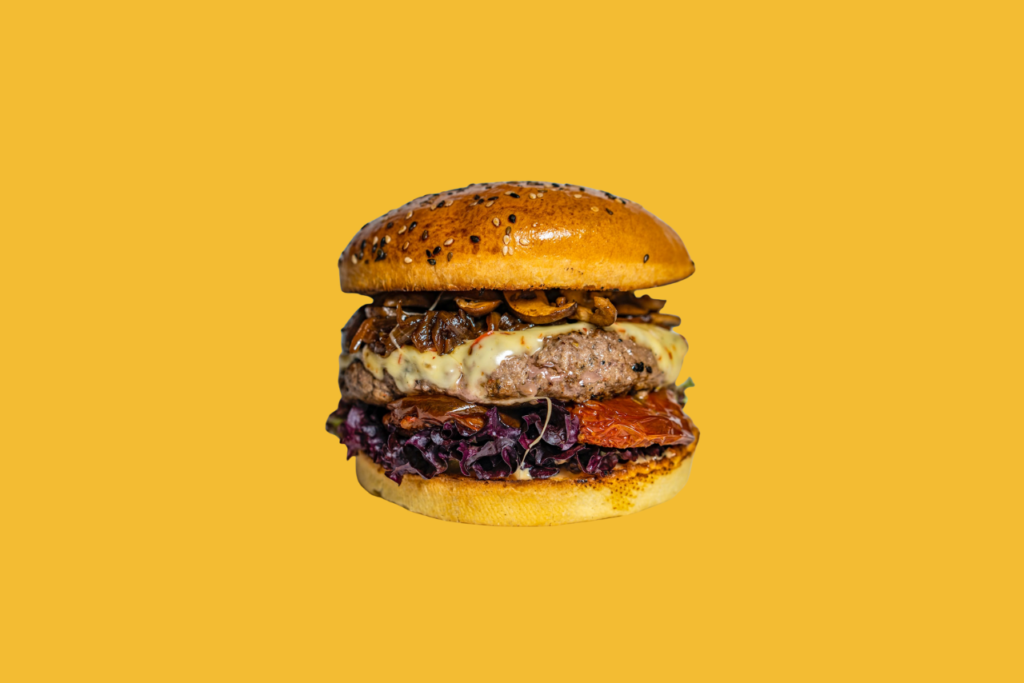
Shaping & Resting Your Burgers
Oh, you thought your seasoned mince meat was ready to simply chuck on the grill? How wrong you were; your burger is going to need to be both shaped and rested next…
Grammenos recommends that you “take your meat out of the fridge an hour or so before you plan to make the burgers so that it can come to room temperature.’’
He goes on to cite everyone’s favourite cook, their grandmother; “My grandma taught me to make burgers when I was a child, and she taught me how important it is not to over mix or press the beef.’’
More wise words from gran/Grammenos; ‘’The only way to achieve a light burger is to mix the beef and other ingredients from the bottom to top of the bowl and, when shaping the patties, not to squeeze or compress, instead forming them with as little pressure as possible. I always followed her advice and my burgers are always perfect! Once the burgers are shaped using roughly 200g of mixture, leave them to rest for 30 minutes.’’
Perfect? We’ll be the judge of that. We can’t fault the softly, softly approach, though. It does make a massive difference to the texture of the final product.
BBQ’ing
Oh, you’re intending to barbie your burger? There really is no better way, we think…
Tyrrell advises that you “Press your burger before placing them on the BBQ, always an inch or so bigger than you want them to end up as they will shrink. Try using a burger basket too, as these help to keep everything together while you’re grilling and make flipping easier”.
Fat Hippo chef Nelson weighs in with his two cents; “For an even cook and to avoid ‘flame grilled’ inconsistencies, use a flat top grill. Lightly oil the flat top and ensure it’s hot before putting your patty on. Season the top side of the patty as soon as it hits the grill and season the other side once it’s been flipped. Seasoning on the grill ensures maximum flavour, without sacrificing moisture or texture of the meat’’.
When it comes to vegan burgers (we thought you’d never ask), chef Tyrrell sounds a word of caution; “In my experience, plant-based burgers always tend to fall a little flat and lack the juiciness of a meat-based burger. To avoid this, before grilling your patty make sure you baste in a plant-based fat-based sauce (vegan butter works well) as this ensures the patty caramelises and stays together better”.
Wise words, indeed.
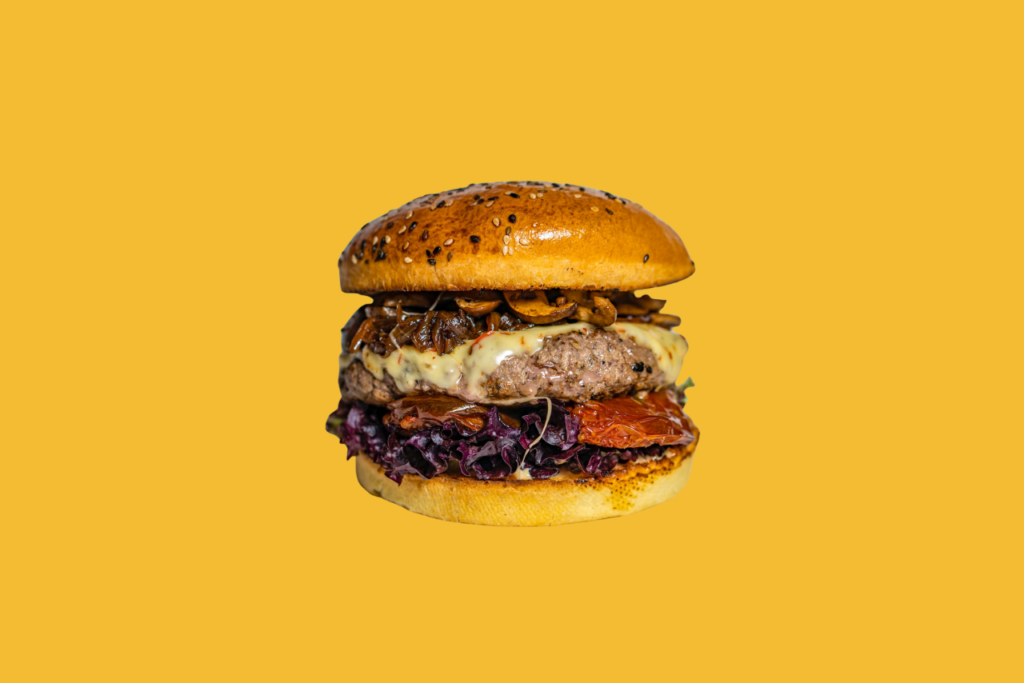
Frying
If you don’t have a BBQ conveniently lit and ready for action, you can, of course, fry your burger instead.
The process is a little different to grilling. As Grammenos says wisely, “When you’re ready to cook the burgers, drizzle them with olive oil and warm up a frying pan over a medium heat. Cook the burgers for 6-8 minutes from each side – I always cook my burgers medium well and I never squeeze them with the spatula. You have to let them cook gently and slowly.”
It’s a good move if you have decided to fry your pattys to drain them a little after they’re cooked, either on kitchen towel or over a wire rack.
Toast Your Buns
Regardless of whether you’ve chosen to grill or fry, it’s essential you give your burger buns some love and attention, too.
Nelson from the Fat Hippo agrees with us wholeheartedly; “Whilst your burger is cooking, toast your bun on the same flat top grill for added flavour. Toasting ensures that sauces and toppings from the burger are held in and don’t make the bun soggy. If you’re using brioche buns, toasting also brings out a nice sweetness to add to your burger.”
Sauces & Accompaniments
A burger is only as good as its condiments and accompaniments, don’t you think? Well, Chef Grammenos likes ‘’lettuce, tomato and of course a great burger sauce.’’
Interestingly, he makes his own; ‘’simply sweat off a little chopped shallot in a hot pan with olive oil and two cloves of crushed garlic, sweet ripe tomatoes, fresh oregano, and half a glass of good red wine. Let it simmer until it is a thick sauce. Let it cool down and if needed, adjust the seasoning with salt and fresh ground pepper. Next, add 1/3 of the tomato sauce to mayonnaise, which I also add ginger to – it sounds unusual, but it works perfectly.’’
Sounds bloody delicious to us!
Tyrrel has further advice on bringing the best out of your burger via condiments; “Umami is critical. Once you’ve layered up your burger with garnishes, cheese and other fillings of your choice, you can get a bit creative with your sauce. You want to really bring out a rich umami flavour, so try store bought ketchup and blend in capers or gherkins – Worcester sauce works well, too.”
Oh, and when it comes to cheese, Grammenos says that he likes to top his burgers with a lightly flavoured cheese; ‘’anything too strong can overwhelm the delicate flavours of the burger.’’
Now that is something we can all agree on; keep that cheddar away from my patty, and pass the plastic American stuff! That said, we wholeheartedly adore a beef burger topped with blue cheese – both are fully flavoured, rich foods that do seem to harmonise perfectly.
Read: 7 incredible vegetarian condiments
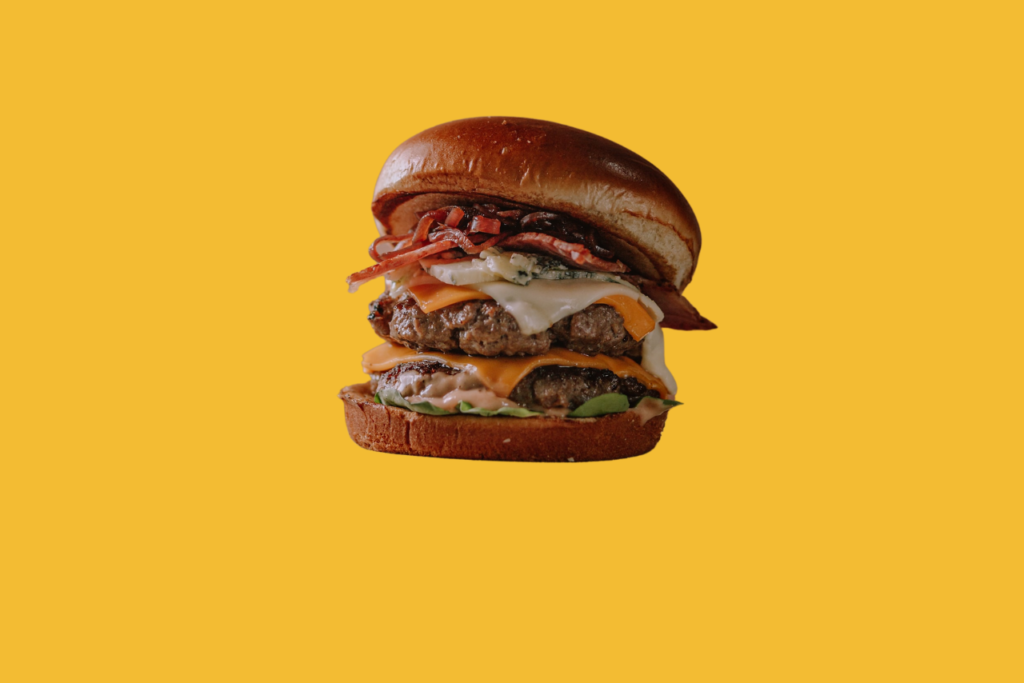
Stacking Your Burger
When it comes to stacking a burger, there are lots of different schools of thought. However, as Mental Floss explains, “most seem to agree on two things: The cheese goes directly next to the patty to maximize melting potential, and sauce should be spread on the bun, ideally on both the top and bottom bun halves”.
We think that since a burger is meant to be eaten with your hands, it’s important that it retains its structure, which means stopping the bottom from getting soaked in burger juices which will inevitably lead to it falling apart. This means using a lettuce layer as a leafy barrier underneath your patty.
The general consensus is that toppings, whether those be pickles, caramelised onion rings, shoestring fries or bacon, should go above your patty already layered with melted cheese.
Here’s how we stack our burger at IDEAL:
- Start from the bottom with your lightly toasted bun.
- Next, add a spoonful of your chosen burger sauce.
- Then add a lettuce layer. This will act as a leafy barrier, stopping juices from spilling out from your patty and soaking your bottom burger.
- Next, add your patty already topped with melted cheese.
- Now layer with your chosen toppings.
- Finally, top it off it with half of the bun slathered with sauce to make it stick.
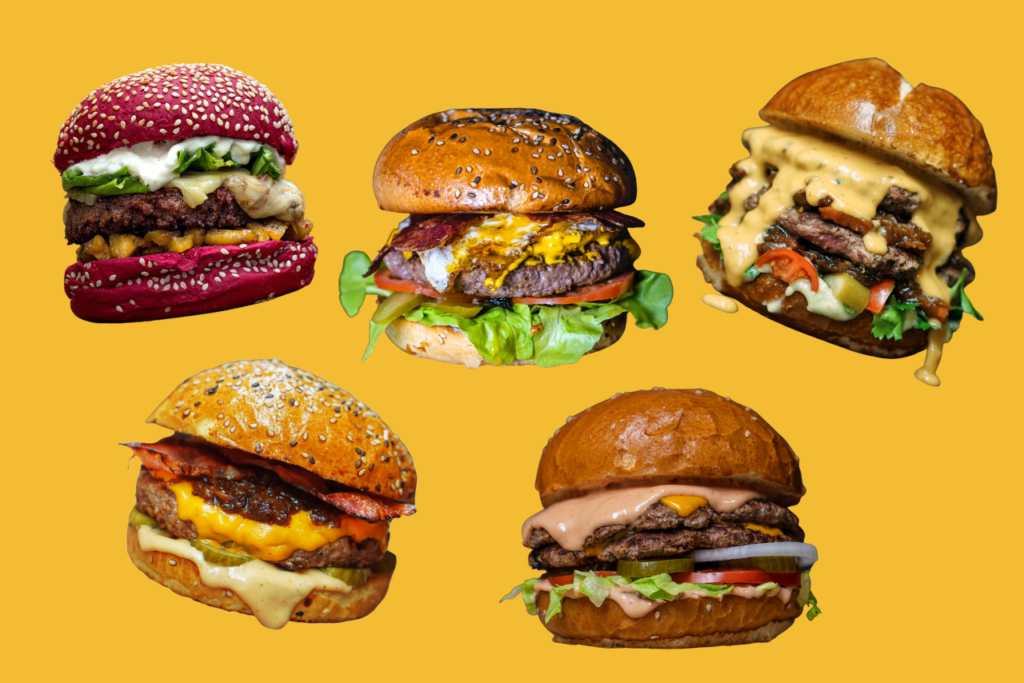
Finish Your Burger With A Little Steam
A final cheffy flourish to see you on your way…
Nelson lets us in on a little secret; steaming. He takes us through his finishing process; “Once the burger is almost cooked, add your chosen toppings to the patty and top with your toasted lid whilst still on the grill.’’ So far, so standard…
Now, it gets interesting. Chef Nelson recommends that you then ‘’Spray a tiny bit of water on or around the burger and briefly cloche the burger – you can use a mixing bowl or a bowl with a handle for this – to steam the top of the bun. This will bring together the flavours and ensure moisture. Remove the bowl, take the burger off the grill, put on the bun base and ENJOY!”
Thank you Nelson, we certainly will.




